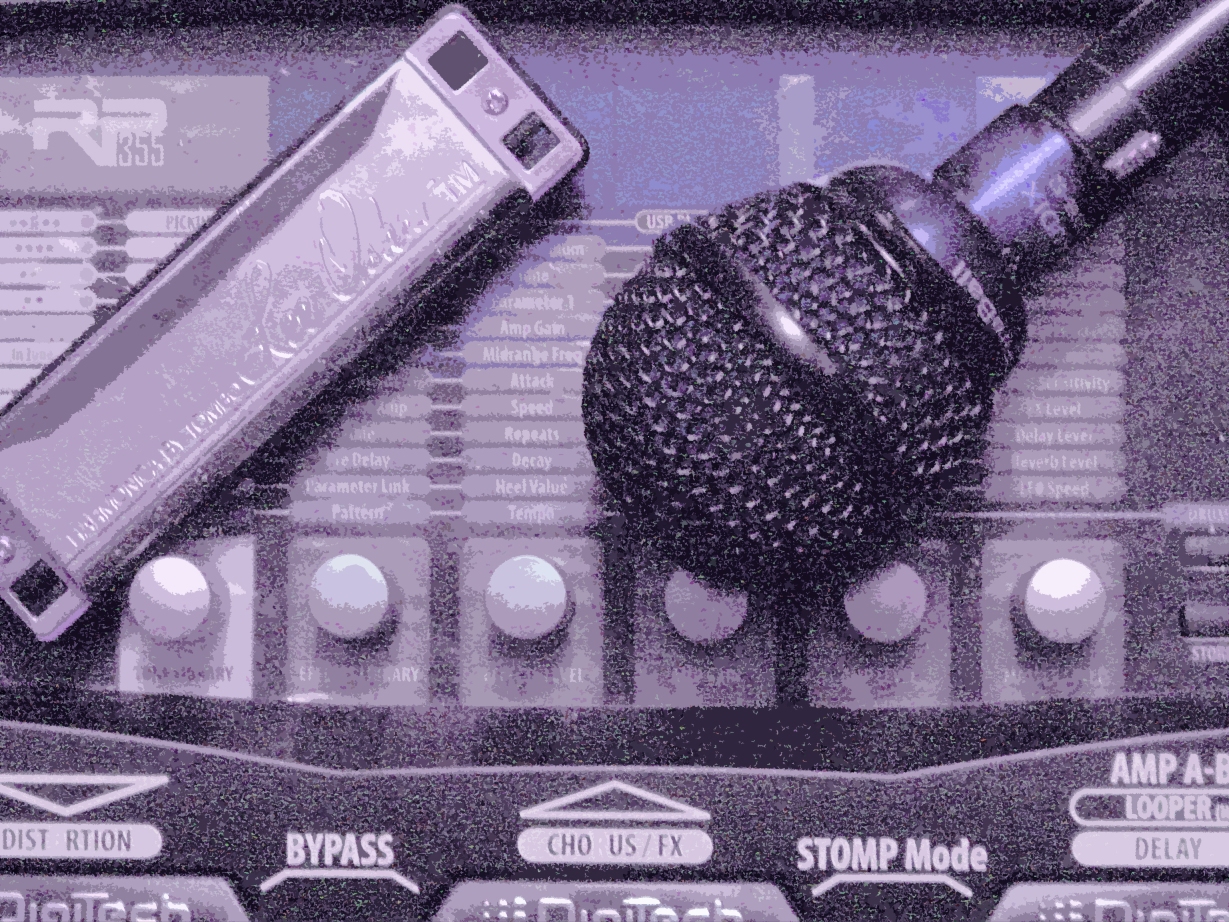
RP Tip #6: Don’t step on the RP (unless you really mean it)
About a week ago, I played a gig that involved six bands, of which I played with two. I used my Fireball mic and an RP355, and I ran the output from the 355 straight to the PA. It worked great–after a song or two the sound man had it dialed in, and I had plenty of volume and a great sound through the monitors. It was great, even though I was anxious at first about being the only guy onstage who didn’t have an amp.
So what’s the problem, you ask? Well, the problem is that damn looper that’s built into the RP355 (and RP255). Every once in a while one of the guitarists, drunk on music (and whatever else was handy), would wander into my space and step on the RP. After a while, one of them managed to start the looper. It took a few minutes for me to figure out what was going on, during which time the melody for “Lo Rider” worked its way into at least two other songs.
I don’t much like the looper in the RPs–it’s not a very sophisticated piece of kit–and even worse, there’s no way to disable it. The only solution is to make sure that there’s enough space between you and the guitarist in your band to prevent an inadvertent step from changing your sound or starting the looper up. If necessary, plant yourself between the guitarist and the RP.
Related Posts
5 Comments
Leave a Reply
You must be logged in to post a comment.
WHAT’S NEW
Categories
- Audio/Video
- Blog
- Blue Future
- Digitech RP Tricks and Tips
- Discography, CDs, Projects, Info, Notes
- Featured Video
- For the Beginner
- Gallery
- Hunter's Effects
- Hunter's Music
- Huntersounds for Fender Mustang
- Meet the Pros
- More Video
- MPH: Maw/Preston/Hunter
- My Three Big Contributions
- Player's Resources
- Pro Tips & Techniques
- Recommended Artists & Recordings
- Recommended Gear
- Recorded Performances
- Reviews, Interviews, Testimonials
- The Lucky One
- Uncategorized
- Upcoming Performances
- Zoom G3 Tips and Tricks

Do you try other multi-fx pedals, like Line 6, Korg etc.? Does digitech really best of them?
I’ve tried several other makes and models. They all sound great. This technology is pretty mature, and Digitech’s not the only crew that knows how to use it. However, I do think that the Digitech devices offer the best price for performance ratio, taking into account the quality and variety of FX and the excellent software support. The lack of software support for patch editing and management is what makes the Zoom devices less attractive in my opinion. Line 6 offers great software support, but they’re priced a lot higher than the Digitechs. So when you put it all together, Digitech offers the most for the least money.
Thanks for Response, Richard! The thing I really like about Digitech is your patches. They sounds good and don’t feedback, you don’t have to worry about tweaking mostly. Amp modelers is a different kind of staff than regular amps.
Hi Richard – The tiny little stages that my band usually plays on are always cramped for space so I try to slide my RP unit under the keyboard stand that supports my harp case and mics etc. Sometime during almost every set I inadvertently step on the RP up/down trigger in the middle of a song and am amused, OK, shocked at the sound that comes out of my RP from one of your patches. Usually the RP cycles through a dozen or so patches before I take my foot off of it – my bandmates look around with a “what the hell is that sound” look and then they look over at me funny. It is actually quite comical and sometimes innovative. I love the octave patches – get’s the look every time.
Thanks for the great work!
Wouldn’t it be nice to have a “lock” button on the RP that keeps the thing set to whatever it’s already set to…
Yeah, those octave patches are great for harp. The best is when you have multiple RPs lined up in parallel, so you can have multiple intervals working at once. I like to put a perfect 4th down on one and an octave down on the other, or two octaves up plus an octave down. It’s the poor man’s HOG.